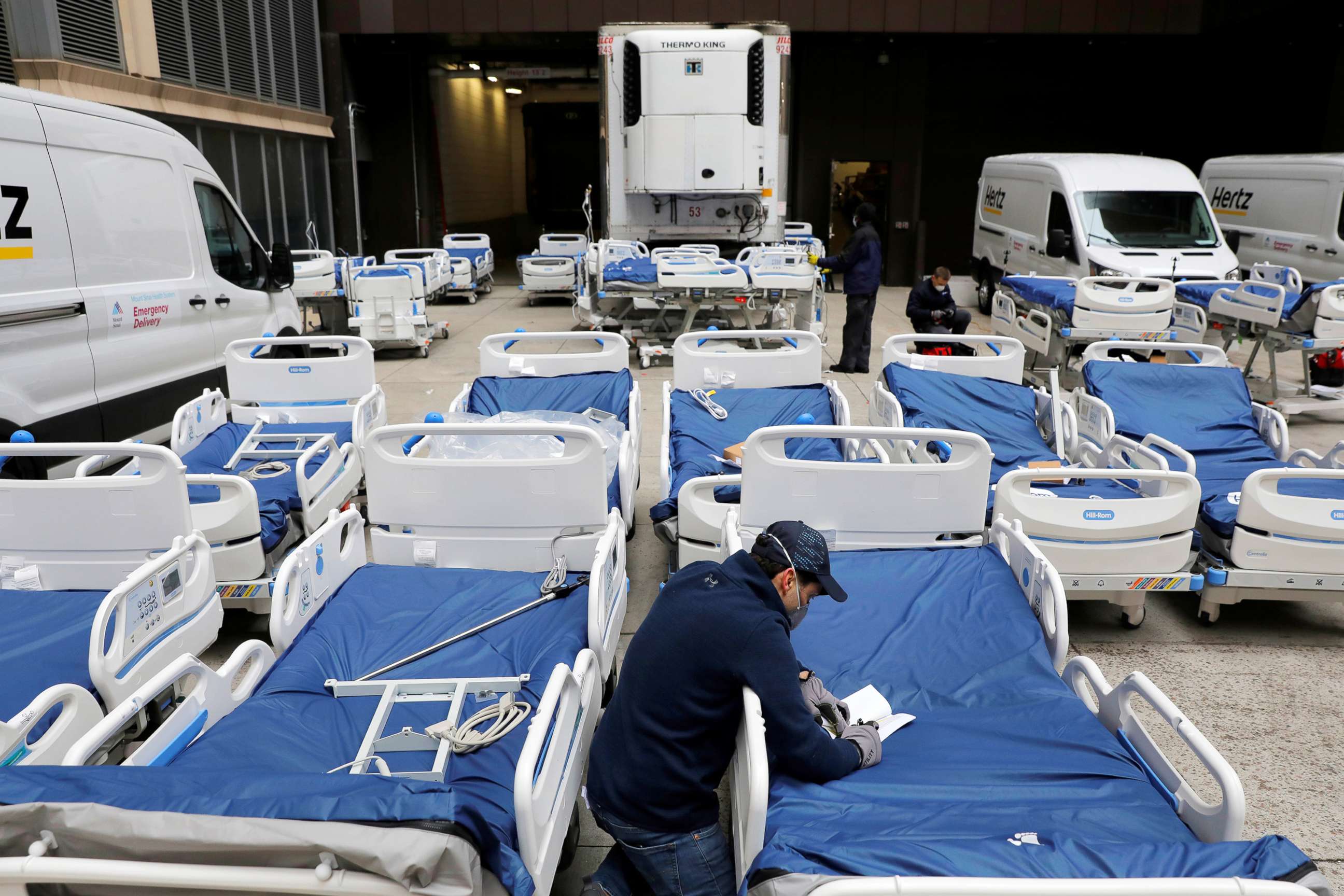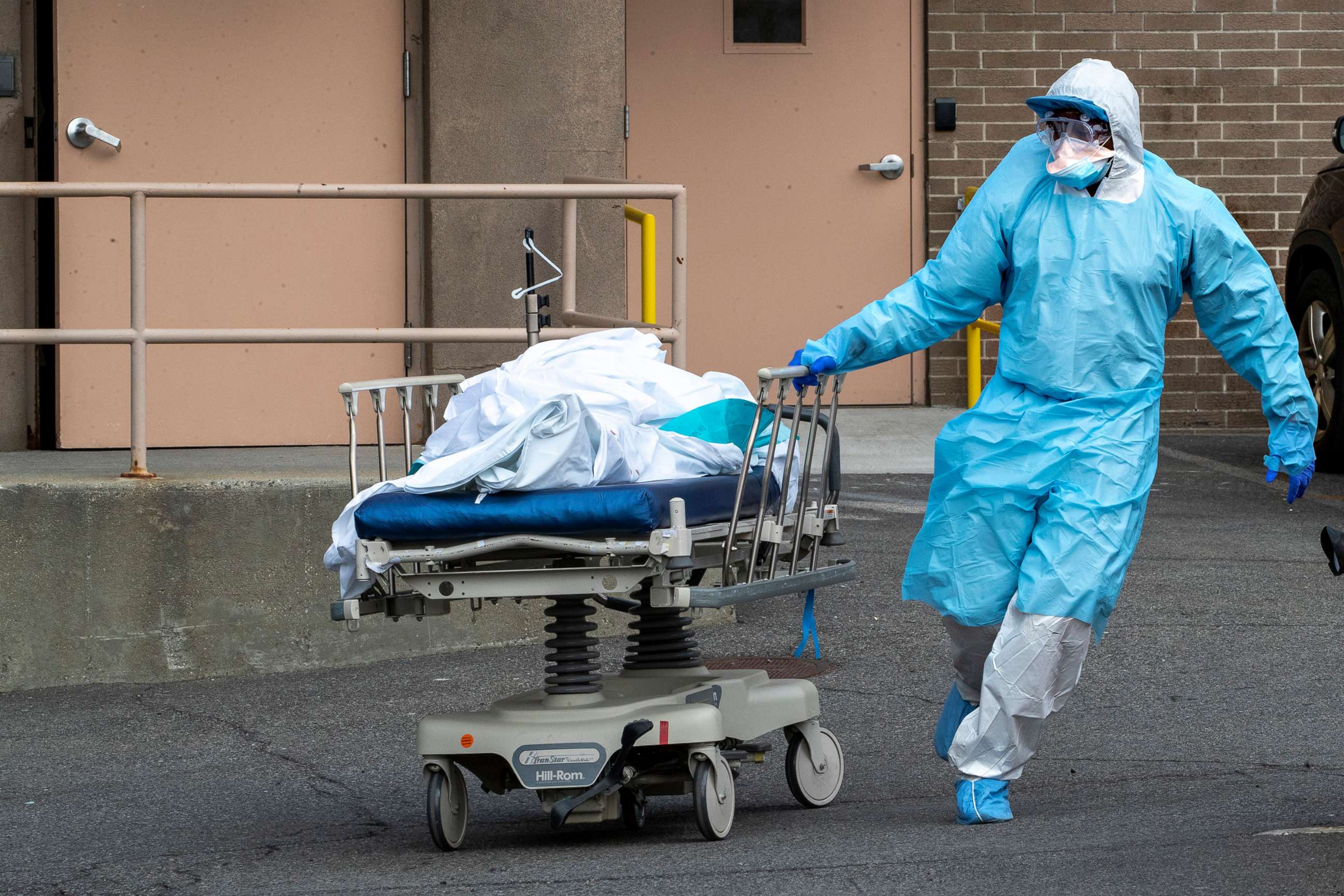Disaster in motion: 3.4 million travelers poured into US as coronavirus pandemic erupted
An ABC News investigation offers sobering insight into how COVID-19 has spread and penetrated so broadly, so deeply and so quickly in the United States. It also helps explain why Americans, no matter where they live, must continue to heed the warnings of health officials to self distance and why the virus likely was here far earlier than first realized.
With the advent of COVID-19, the world has officially entered a dangerous new phase where a surge in international travel in recent decades served as the springboard -- jet fuel, really -- for an infectious disease potentially to kill hundreds of thousands in the U.S. and infect the global economy at breathtaking speed.
As New York Gov. Andrew Cuomo put it, "I have no doubt that the virus was here much earlier than any of us know, and we have the virus more than any other state because travelers from other parts of the world come here first."
Tune into ABC at 1 p.m. ET and ABC News Live at 4 p.m. ET every weekday for special coverage of the novel coronavirus with the full ABC News team, including the latest news, context and analysis.
Travel data of passengers arriving in the United States from China during the critical period in December, January and February, when the disease took hold in that country, shows a stunning 759,493 people entered the U.S.
"This is an astonishing number in a short period of time, illustrating how globalized our world has become. Just as people can hop continents with amazing ease, the infections they carry can too," said Dr. Vinayak Kumar, an internal medicine resident at the Mayo Clinic and a contributor to the ABC News Medical Unit.
Those travelers from China included more than 228,000 Americans returning home and hundreds of thousands of Chinese nationals arriving for business, academics, tourism or to visit family.
"The numbers are clearly alarming," Dr. Simone Wildes, an infectious disease specialist at South Shore Health, told ABC News. "It shows that globalization is here, and we have to be better prepared to deal with the impact this will have on all our lives in so many ways."
Added Wildes: "It is difficult to estimate the portion of travelers coming from China to the U.S. with COVID-19, but fair to speculate that a large number might have been infected at the time of travel."

While the majority of the travelers likely went to major population centers like New York, Seattle or Los Angeles, with so many arriving, any of the hundreds of thousands could have gone anywhere in the U.S.
Researchers from Johns Hopkins University said the outbreak could have started as far back as November, and that there may have been hundreds of cases in Wuhan by early December. On Jan. 14, a different team of researchers from the University of Toronto warned that the outbreak could quickly jump from Wuhan to other major cities because of international travel.
President Donald Trump restricted travel from China effective Feb. 2, which likely saved lives. But by the time the president acted, much of the damage had already been unleashed, and some 18,000 Americans returned home from China in February and March, after the restrictions were in place. It's unclear how intensive, if at all, the screening was for the Americans coming home at that point.
"The United States banned travel to China 12 days after the world heard there was an outbreak of severe pneumonia in Wuhan. ... The problem was, it was too late," said Dr. Todd Ellerin, chief of Infectious Disease at South Shore Health and an ABC News Consultant. "Even though there had only been 12 confirmed cases in the U.S. on the day President Trump announces the travel ban, the reality was there were many more unconfirmed cases."
The data, gleaned from Commerce Department records and additional information compiled by U.S. Customs and Border Protection at the request of ABC News, represents the most detailed accounting yet of travelers coming into the U.S. from China and other countries where the virus quickly spread.
ABC News examined data from December, January and February on travelers entering the U.S. from eight of the hardest-hit countries: 343,402 arrived from Italy, 418,848 from Spain and about 1.9 million more came from Britain.

Combined with those from China, that's more than 3.4 million people from just four countries -- nearly half, about 1.5 million, Americans returning home. Travel from Italy and Spain wasn't shut down until March 13, with U.K. arrivals restricted a few days later.
The data shows how a highly communicable disease can quickly move throughout an interconnected global community, spreading across the globe in a matter of hours. The novel coronavirus was off to the races before the international community knew what had hit it.
"I think this was bound to eventually happen," Kumar said. "The high volume of international travel, the lack of screening, the inconsistent hand-washing and cough control ... these laid down the perfect conditions for a disease to spread. Add that to a virus that is both largely asymptomatic and has a prolonged infectious period, and you have got a perfect storm of factors for a pandemic."
The world simply wasn't ready, even though scientists and medical experts had long warned of such a possibility.
"This is not new," said John Brownstein, an epidemiologist at Boston Children's Hospital and an ABC News Consultant. "We've seen this with H1N1, SARS, Zika. We should have had the infrastructure to prepare for this. And we didn't.
"There was a lack of recognition that a coronavirus emerging in a market in Wuhan could be at our door in a matter of months. Now that it's hitting the U.S., for the first time really, people are aware of the interconnection and risk."
Medical experts who spoke to ABC News said it can't be known exactly how many of these travelers were infected or contagious, but that it's highly likely some portion carried the virus without exhibiting severe symptoms. Minor symptoms, including coughing, sneezing or a runny nose, may have been ignored, leading to people unknowingly spreading COVID-19.
The novel coronavirus "is extra complicated because of mildly symptomatic and asymptomatic transmission, which made it much more difficult to contain," Brownstein said. "We were caught flat-footed."
Among the millions of travelers likely were a number of biological ticking time bombs, passengers who'd later infect others at a rate at least double that of the typical flu carrier.
"SARS-CoV2, the virus that causes COVID-19, the most disruptive infection the world has seen in the last 100 years, has some features that make it impossible to completely contain," Ellerin said.
It's time for governments to rethink how to mitigate the emergence of superbugs, experts told ABC News.

"We should recognize that any time there is an emergent event, there is a very good opportunity for global impact," Brownstein said. "We need to be thinking about emergent diseases as a global concern rather than [something] happening in a particular part of the world."
Additionally, there have been questions and criticisms about how quickly China alerted the international community, given the extraordinary scale of travel in and out of the country. Questions also have been raised about the Trump administration's public stance and early response -- was the U.S. aggressive enough early on, given the travel numbers? It's unclear how closely policymakers and health experts weighed the data -- or whether they had access to the data.
Political, business and health leaders now working together to battle COVID-19 risk a repeat of the pandemic without newer, better measures implemented going forward, experts said. That could include more infrastructure, more medical equipment and doctors at airports, new methodologies never before considered necessary: routinely checking passengers' temperatures, en masse or individually, using quarantine facilities at transportation hubs or storing gloves and masks on planes to be used by people feeling ill.
"This could be an opportunity for countries to provide rapid response to catastrophes and exchange ideas and information, given the advances in technology," Wildes said. "The medical advances in one country can be shared with other countries that will aid in the management of their patients and possible impact on their health care system. Researchers around the globe can work on the same problem with the aim to find treatment for a vast number of patients at the same time. This can serve as a early warning for other countries."
Wildes said, bottom line, it's all about cooperation: "We should realize that we are all in this together. We are all at risk of being exposed to the virus, so let us fight together so we all can be healthy together."
But there are no easy answers.
"Could China have announced to the world a couple of weeks earlier that there was concern that a SARS-like outbreak was occurring? Possibly," Ellerin said. "Could an immediate travel ban announced by China have slowed the spread of this virus even further? Likely. But, in the end, given the complexities of global travel and the insidious nature of this virus, even an immediate travel ban probably would not have fully contained this contagious pathogen."
In other words, the world had better get creative -- and fast.
What to know about coronavirus:
- How it started and how to protect yourself: coronavirus explained
- What to do if you have symptoms: coronavirus symptoms
- Tracking the spread in the US and Worldwide: coronavirus map




